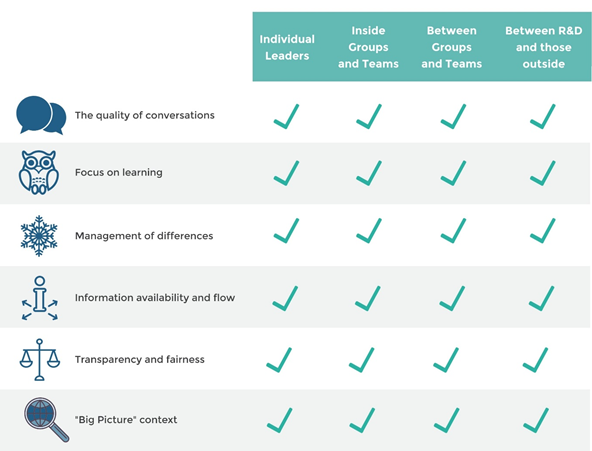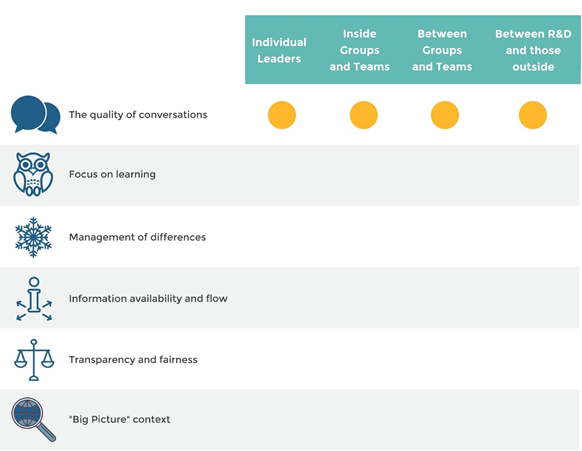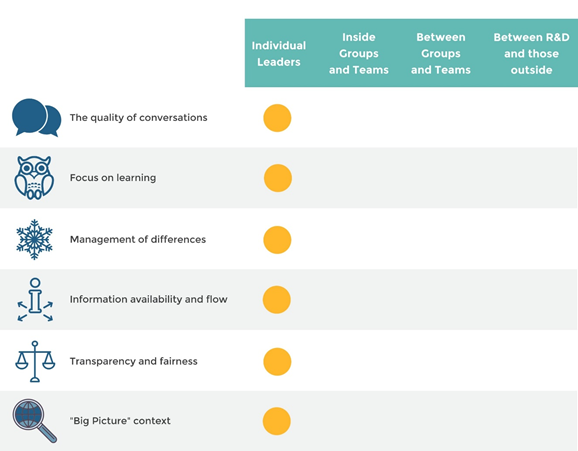Almost every R&D organization has most or all of the scientific expertise it needs to be innovative.
Adding more scientific knowledge or ability is rarely the biggest opportunity.
The opportunity more often lies with a handful of important behavioral elements:
- The quality of conversations
- A focus on learning
- The management of differences
- Information availability and flow
- Transparency and fairness (this matters a lot to scientists)
- A “big picture” context that is ever-present in the day-to-day
What is your ROI on your R&D Investment?
Find out how well your time, energy, and financial investments are set up to succeed, with one of our four R&D ROI Surveys.
Every organization has existing strengths and weaknesses with these elements. How do we get our hands around it, and get traction on improvement? There are four organizational layers that can act as doorways:
- Individual Leaders
- Inside teams/groups
- Between teams/groups within R&D
- Between R&D and those outside it
This provides a “grid of opportunity” from which priorities can be identified.

Your approach can begin with a focus on improving one behavioral element across all of the organizational layers, like this:

or, it can focus on improving behavioral elements across one organizational layer:

Your choice should be based on your current circumstances, which can be explored through our simple self-assessment. Your choice should also reflect your strategy-driven ambitions, which are best explored through a conversation with an experienced consultant. The most effective strategy for creating improvement combines consulting to groups with the development of individual leaders.
